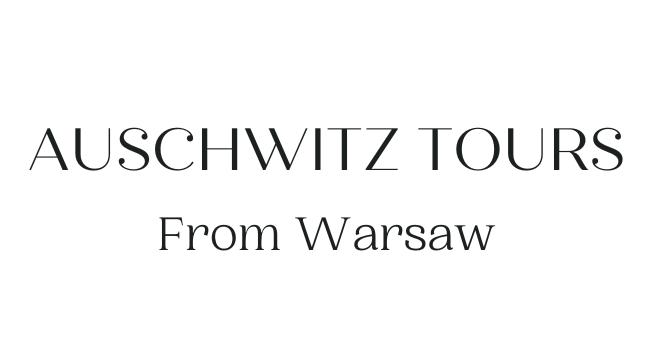The Best 10-Day Poland Itinerary for 2025
If there’s one question that our readers always ask us, it’s to double check and give them feedback about their Poland itinerary, and most of the time, people plan 10 days in Poland.
And because we’re all about helping people traveling around our country, we prepared this comprehensive travel itinerary with a clear structure, ideas for each day, and a lot of local tips like getting around and what to eat.
We’re confident it will help you, so please make sure to read until the end. We focused only on the important information, and everything is customizable in case you want to change. Let’s get right into it.
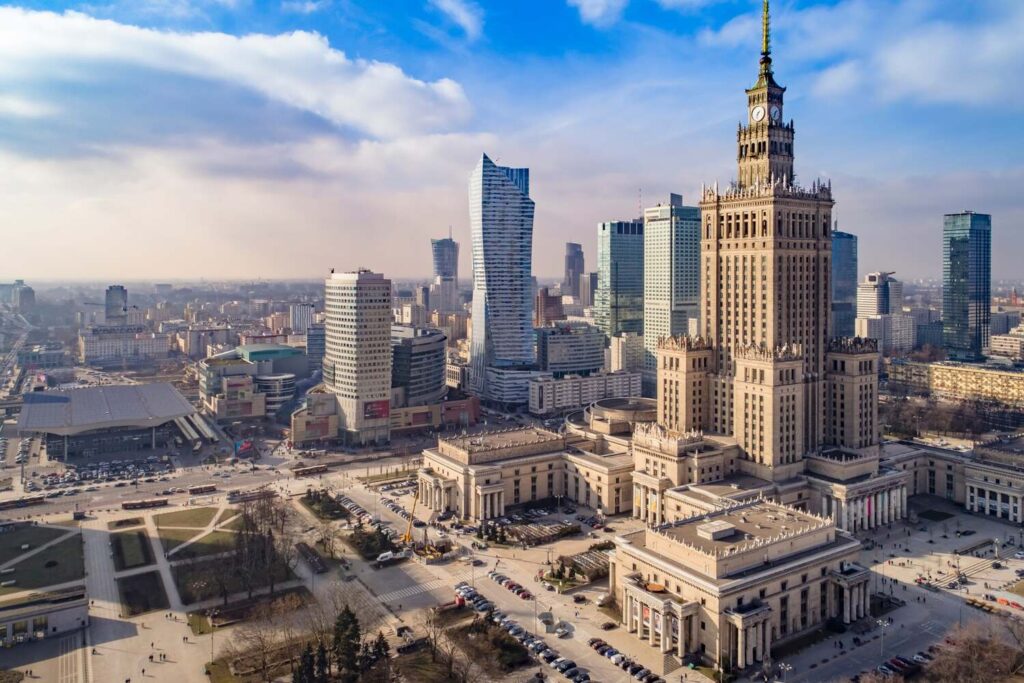
Planning a Poland Itinerary: The Essentials
Ten days go fast, so don’t overdo it. Stick to a simple route and stay at least two nights in each place. You won’t waste time packing and unpacking every single day. Book longer trains ahead of time, especially Gdańsk to Krakow, because they fill up.
There’s more to know, and we’ll actually go through many points at the bottom of this article, but for now, let’s talk about the absolute essentials to plan the perfect trip.
Is 10 Days in Poland Enough?
Yes, 10 days are enough, as long as you plan. With 10 days, you can see four very different parts of the country without rushing. You’ll spend most of your time in Warsaw and Kraków, where you’ll find the main museums, cafes, and nightlife.
Then, you get a couple of days by the sea in Gdańsk, and two more in the mountains down in Zakopane. The only long train ride is between Gdańsk and Kraków. The rest are short. You won’t have time for every village, but you’ll see a good mix of city life, nature, and history. It’s a solid first trip overall.
How to Get Around Poland?
To be fair, trains are your best bet. They’re cheap, fast, and usually on time. Use the PKP Intercity website to book, or just grab a ticket from a machine at the station. Trams and buses inside cities work with contactless cards, just tap when you get on and again when you get off.
For Kraków to Zakopane, buses are quicker than trains. If you need to get around town quickly, apps like Bolt or Uber are cheap and easy, so you can skip regular taxi, and even domestic flights if you want to. And unless you’re heading deep into the countryside, you won’t really need to rent a car.
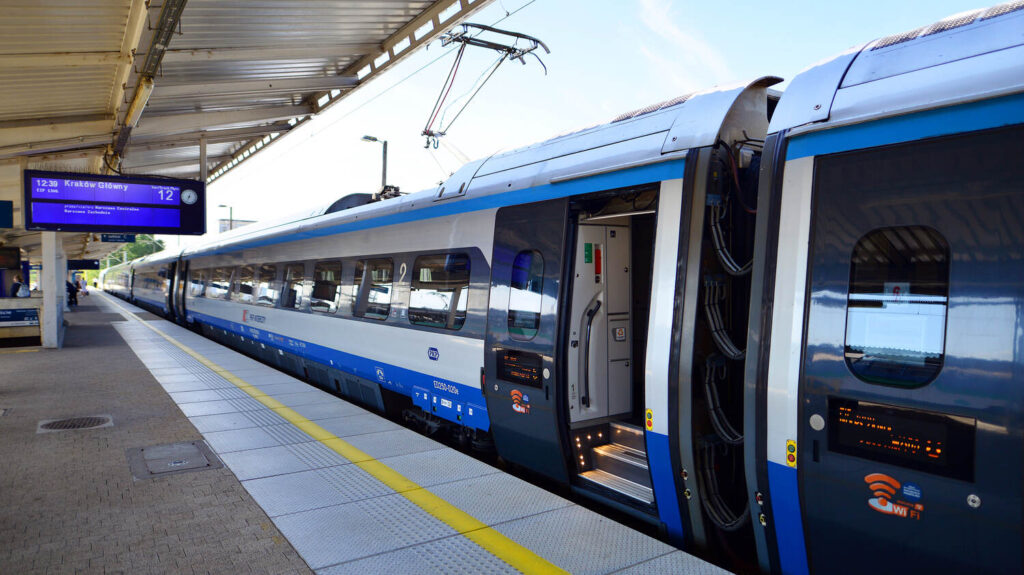
Best Time to Visit Poland
We recommend going in May, June, or September if you can. That’s when the weather is easy, not too hot and not too cold (and this is a bonus in Poland, because it does get cold!).
You’ll be fine with a light jacket in the morning and short sleeves by midday. July and August are the busiest months. It’s more crowded and prices go up for hotels (especially in Krakow), but it’s still manageable. Winter can be beautiful too, with snow and Christmas markets, but expect cold days and short daylight.
Planning a mountain hike? June and September are your best bet. You’ll see fewer people and clearer trails. Try to avoid Easter week – places close and trains get full.
Complete Poland 10-Day Itinerary
This itinerary keeps things simple and smooth. You won’t be changing cities every day or cramming your schedule with too much. You’ll get time to explore the top spots without rushing, together with some quieter corners most people skip.
Below is your daily plan, broken down clearly so you know where to go, what to do, and when to take it easy. Oh, and if you want a little more choice or value for your trip, make sure to read this complete guide with all the best things to do in Poland.
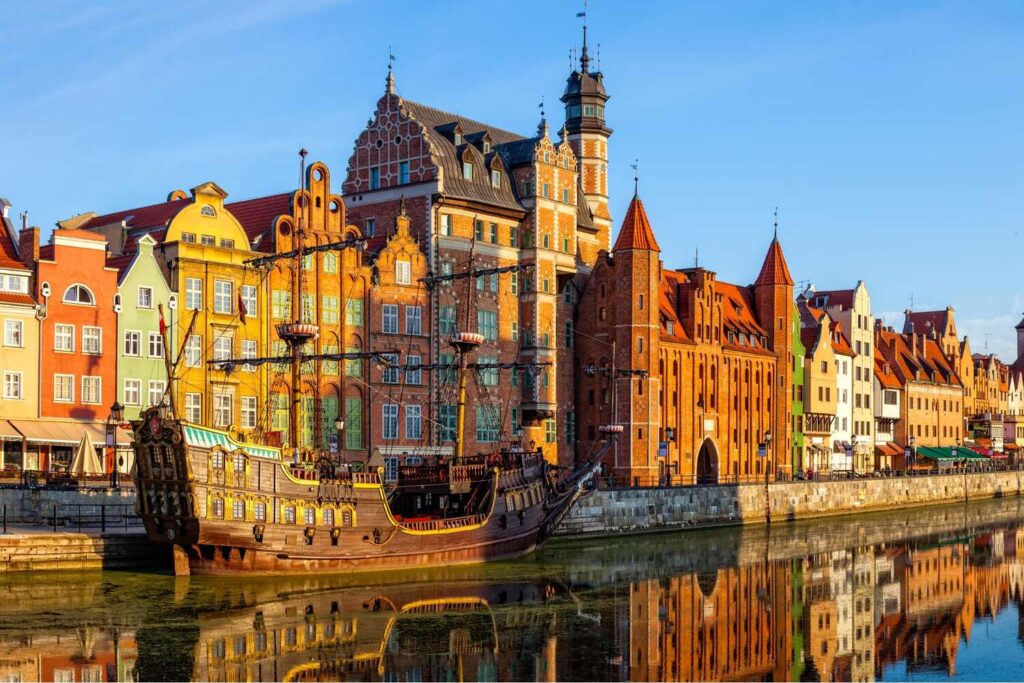
Day 1: Arrive in Warsaw
It makes sense to start this trip in Poland’s capital, and you’ll land at Chopin Airport and take the SKM train or Uber into the city. It takes about 20 minutes. Drop your bags at your hotel (we suggest Hotel Polonia Palace, but anywhere central will do the trick), then head straight out.
Start by walking up Krakowskie Przedmieście, part of the city’s Royal Route. It leads you past old churches, palaces, and eventually the Presidential Palace. Keep going until you reach the Old Town Square, it’s small but full of color and energy.
Climb the St. Anne’s Church tower for a full view of the square and the Vistula River in the distance. Grab coffee or a sweet pastry from Cukiernia Pawłowicz (we love their pistachio croissants, so give them a try). And then for lunch, try a nearby place like Bazyliszek for classic Polish plates.
In the afternoon, take a tram or walk across the river to the Praga district. This is Warsaw’s edgier side. You’ll find murals, old tenement buildings, and newer bars and cafés in converted factories. In case you’re into beer, visit Cześć or Boska Praga.
Head back to the Old Town before sunset to catch the light on the Royal Castle’s walls, one of the best places for sunset in the whole of Poland. For dinner, go to Zapiecek, known for their pierogi. Go classic with potato and cheese, or try the mushroom ones.
If you have energy left, catch a short Chopin recital in one of the intimate venues nearby. They’re often tucked into cellars or chapels and usually start around 7 or 8 pm.

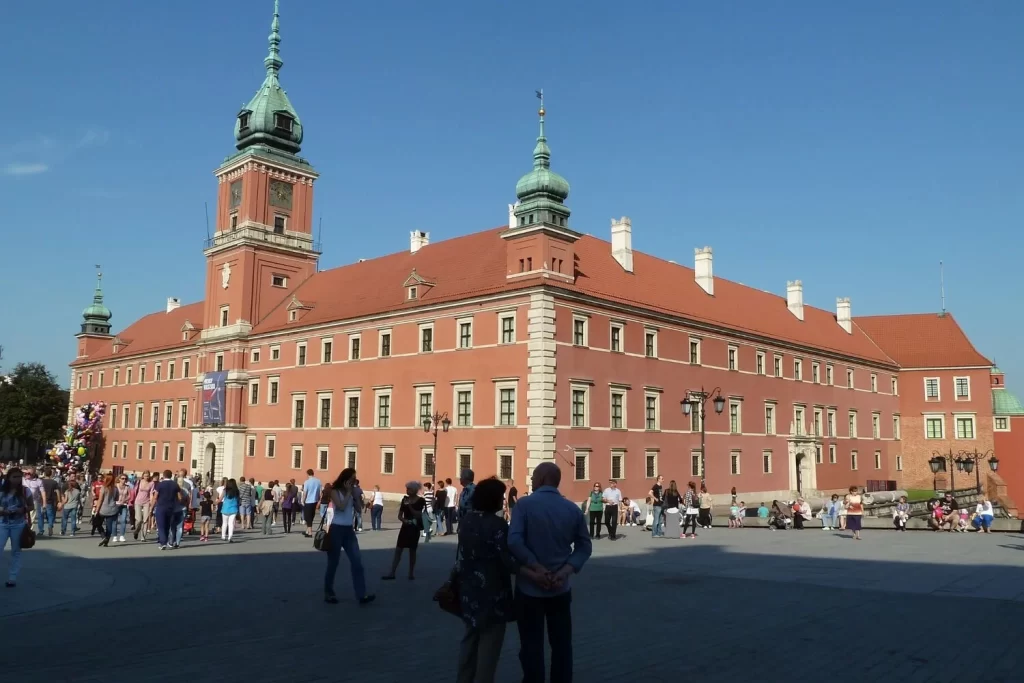
Day 2: Warsaw Old Town + Around
Note: We plan this second day in Poland around Warsaw Old Town, but in case you want to change things up, you can consider booking a day trip from Warsaw to Auschwitz. Otherwise, we will cover the concentration camps on day 6 from Kraków.
Start early and after breakfast, head to Łazienki Park, one of the nicest green spaces in the city. Tram 180 takes you there, or you can walk if you feel like it. You’ll see swans on the lake, peacocks wandering the lawns, and the grand Palace on the Isle sitting right in the water.
The Chopin monument is also here. Quiet in the morning, packed in the summer afternoons.
Grab a coffee and light breakfast at the park café, then head across town to the Warsaw Uprising Museum. It’s powerful, with real footage, audio, and artifacts from 1944. Give it at least two hours, maybe three if you like to read everything. Certainly a great introduction to Polish history.
After that, go cheap and local for lunch. Head to Bar Bambino, one of the city’s better-known milk bars, for soups, schnitzels, or pierogi for under 5 euros.
In the afternoon, take a tram or Uber to Wilanów Palace. It’s bright yellow, baroque, and worth the trip out of the center. If you’re into gardens or want a quiet place to rest, this is it.
Before dinner, walk down Nowy Świat. It’s a café-lined street that blends into the Royal Route. Grab a coffee or juice and watch the street fill with locals heading home. Dinner? Try GOŚCINIEC Polskie Pierogi, a nice spot with big portions and friendly prices. Wrap up the day with a walk across the Świętokrzyski Bridge. At night, it lights up and gives you a clean view over the Vistula.
Talking about the Vistula River, you can also book a romantic cruise, which is relatively cheap and makes a great end to the day.
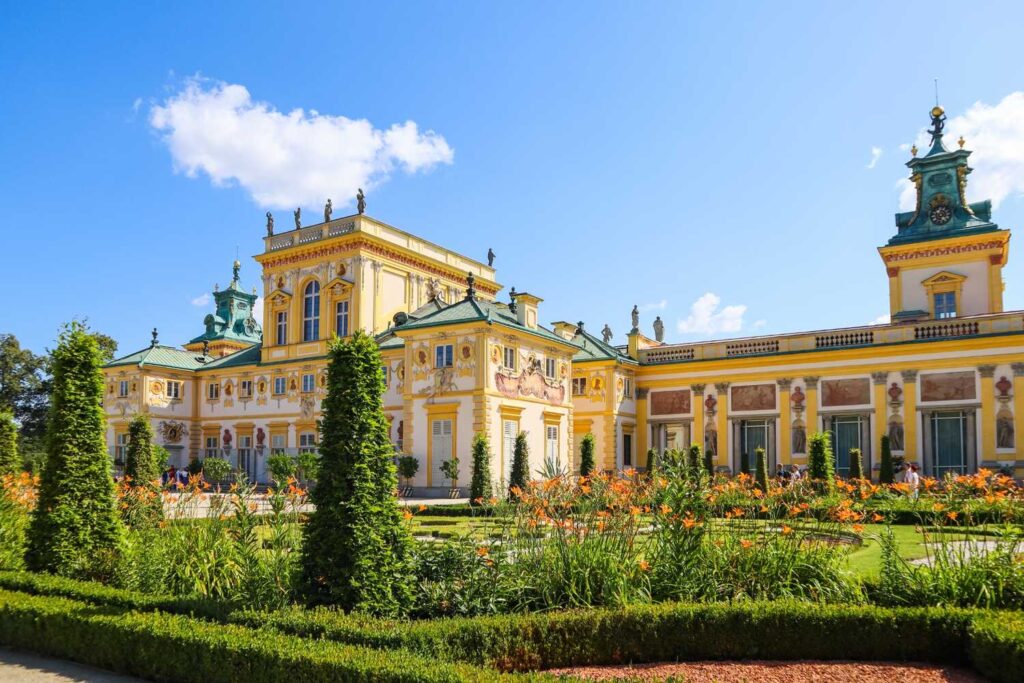


Day 3: Travel to Gdańsk and Visit the Old Town
In the morning, take the fast train from Warsaw to Gdańsk. It takes about three hours and trains are generally on time. Once you arrive, check into your hotel (check out IBB Hotel Długi Targ, or choose anywhere near the main strip) so you don’t waste time commuting.
Start your walk near the Green Gate, then follow the riverfront past the medieval Crane. It was once used for unloading cargo back in the day. This area has been beautifully rebuilt and feels both historic and relaxed. That’s right, Gdańsk is probably one of the most relaxing places in Poland.
Walk along Długi Targ (Long Market) and spot landmarks like the Neptune Fountain, Artus Court, and all those narrow, colorful facades. Right after that, head up St. Mary’s Church tower for a wide view over the rooftops and port cranes in the distance.
Grab lunch at Pierogarnia Mandu, a popular spot with lots of pierogi fillings. Sweet, savory, veggie, meat…We always go there when we travel to Gdańsk, simply one of the best places for pierogi.
In the afternoon, give a solid two hours (or more) to the World War II Museum. It’s big, modern, and done with care. Expect audio, film, and immersive displays.
Before dinner, take a short detour to Mariacka Street, which is full of amber shops, stone gargoyles, and cobbled charm. As sunset hits, walk across the Ołowianka footbridge and sit by the river for a calm view.
For dinner, try Restauracja Gvara — it’s close, not too fancy, and has solid Polish dishes and fresh fish options. If you want one more drink, Brovarnia nearby serves their own beer brewed right on-site. It’s quiet, low-lit, and good for winding down.
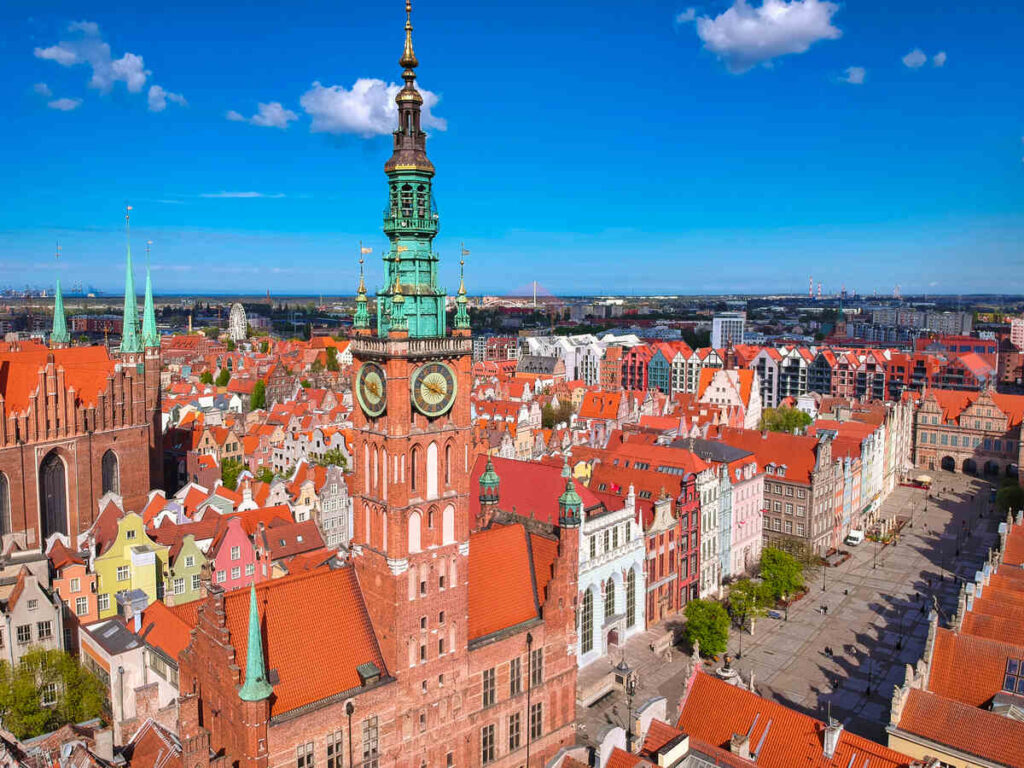

Day 4: Explore Gdańsk and Beyond
We promised that you wouldn’t rush around with this Poland itinerary, and today’s up to you. If you want something big and bold, catch an early train to Malbork.
The ride is only about 50 minutes, and the station is a short walk from the castle. You might think that it’s just another castle, but it’s actually one of the biggest in the world.
You’ll cross a footbridge, then enter one of the largest brick fortresses in the world. It’s massive, and you should allow at least three hours to visit. See the walls, towers, and museum halls.
When you’re done, grab a quick bite near the station (there’s a solid restaurant across the street called Bar & Restauracja Bis). Then, take the train back in time for the evening.
Want to stay local and not move from Gdańsk instead? Head down to the docks and hop on a short boat ride to Westerplatte, right by the Gulf of Gdańsk. This is where World War II started, and you’ll see monuments and old bunkers by the sea. It’s peaceful now, but the history hits hard.
Afterward, make your way back to the European Solidarity Centre, a powerful museum about Poland’s fight for freedom and the rise of the Solidarity movement. The café inside is a good stop for lunch.
In the afternoon, take a slow ride on the AmberSky Ferris wheel for full views over the town and river. It’s touristy, sure. But the view’s worth it. For dinner, book a table at Prologue: they do herring a few ways, and the plating is nice without being stuffy.
Stay another night at IBB Hotel or switch it up and try Młody Byron, a budget-friendly hostel with a view over the water. If the sky’s clear, end the day with a quiet walk along Brzeźno Pier and relax, because tomorrow is travel day, heading to Krakow.
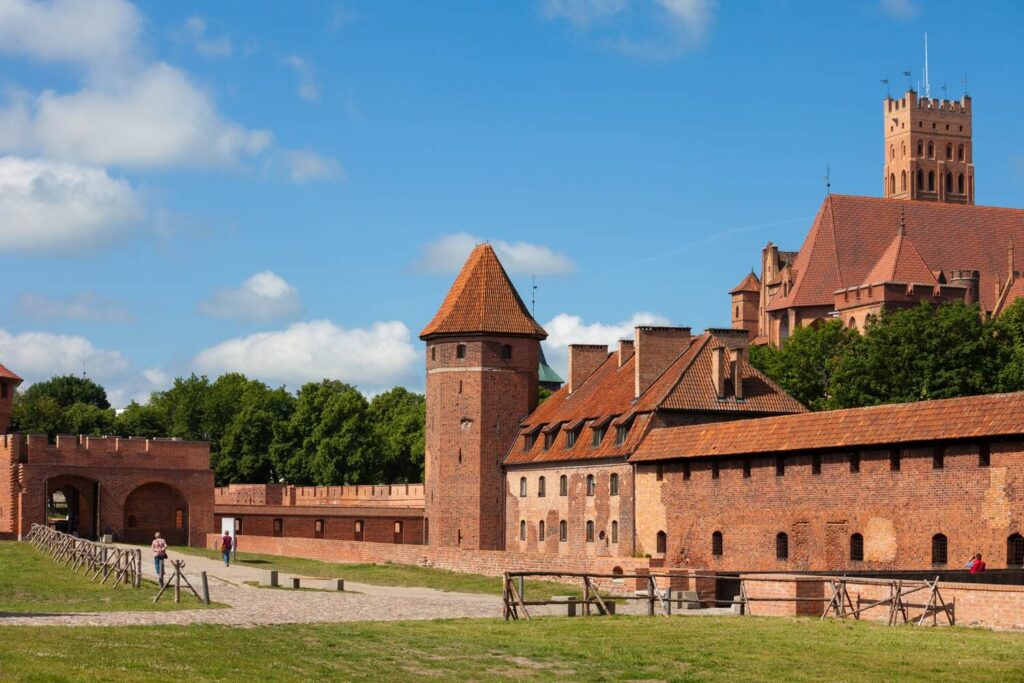

Day 5: Head to Krakow from Gdańsk
We’re already half-way through this itinerary for Poland, and it’s time to head to Krakow. You can either take a domestic flight or the morning Pendolino high-speed train. The flight is slightly more convenient but costs much more, so we generally suggest the train.
It’s a long ride, around 5.5 hours, so bring snacks or grab something at the station. Once in town, get to your hotel and start exploring the city. Our pick for Kraków is Hotel Amber, which is close to Planty Park and within walking distance of everything.
Start your visit with a walk through the Main Square, one of the biggest in Europe. You’ll hear the trumpet from St. Mary’s Basilica every hour, and that’s a local tradition. Time to take photos! Stop inside if it’s open. Right in the center is the Cloth Hall, where you can pick up amber jewelry or wood carvings.
Next, head south into Kazimierz, the old Jewish Quarter; It’s full of vintage stores, murals, and cafés. Grab a zapiekanka: an open-faced toasted baguette from a stall at Plac Nowy for lunch. It’s simple but definitely filling. If you want something heavier, many cafés nearby have pierogi and soups on offer, and that’s probably a better option if you travel in the wintertime.
Walk across the pedestrian bridge to Podgórze, the former ghetto area. You’ll see modern murals, memorial chairs at the Ghetto Heroes Square, and some small museums if you have the time. Before sunset, make your way to the Vistula riverbank for golden hour light.
And to end the day, for dinner, go with a heavy Polish meal at Restauracja Pod Wawelem. Think pork knuckle, cabbage, and beer in huge glasses. Afterwards, stop at Good Lood for some of the city’s best ice cream. If you’re still going strong, there’s always live jazz in one of the cellar bars near Szewska Street.
A word of caution: on day 6, we planned a day trip from Krakow to Auschwitz, so try not to go back too late!
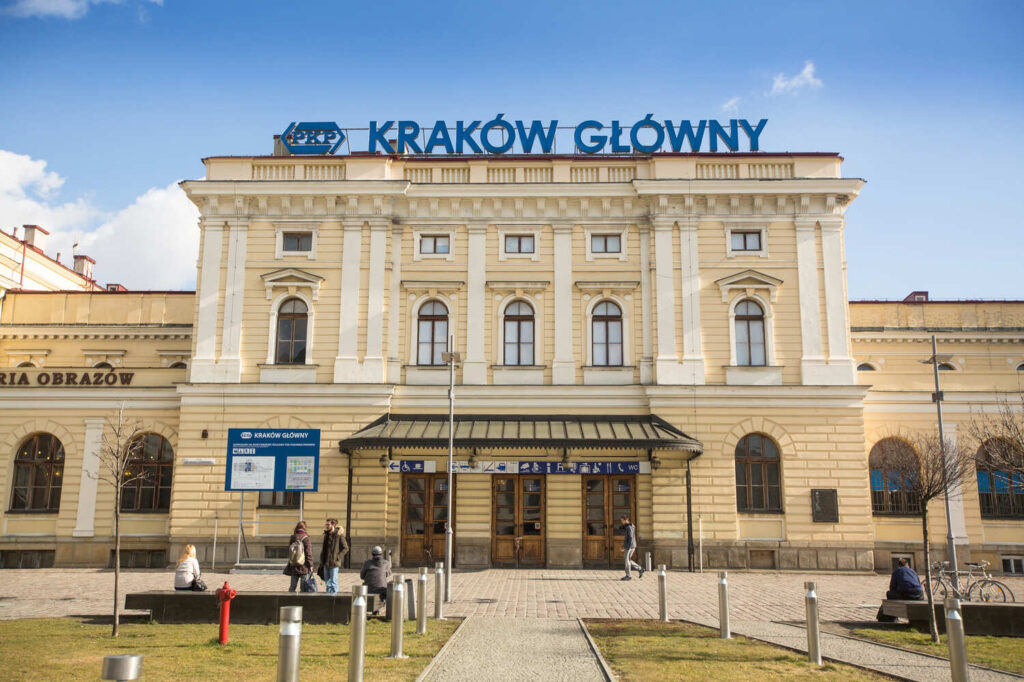



Day 6: Day Trip to Auschwitz and Salt Mines
This is a long and emotional day, so start early. Most combo tours pick you up from your hotel between 6 and 9 in the morning, depending on the option you pick. And before you ask yourself, yes, Auschwitz is worth visiting.
The drive to Auschwitz-Birkenau takes about 90 minutes, and this is why most people prefer this option rather than a tour from Warsaw. Once there, your guide will lead you through the barracks, towers, and museum buildings while sharing the history of Auschwitz from survivors and documents from the war. The experience is intense and moving, it sticks with you, so be mentally prepared.
Also, if you have the chance, please read a book about Auschwitz and the holocaust before going, it will help you understand the complex and the terrible stories behind it.
After the tour, you’ll have a short break for lunch. It’s usually a basic sandwich or snack provided on the bus. Then the group heads to the Wieliczka Salt Mine, which is very different in tone.
You’ll go underground by staircase (lots of steps, so wear decent shoes) and walk through chambers, chapels, and salt sculptures. It’s cool down there, and we suggest bring a layer. The tour ends in a large hall deep under the surface, where they even hold concerts.
Note that you can also get to Auschwitz on your own, however, we recommend a guided tour as they’re affordable and you’ll learn much more than visiting on your own.
You’ll be back in Krakow in the early evening. Freshen up, then grab a light dinner. Vegab is a good option. They do plant-based wraps and “kebabs” with fresh sauces. If your brain needs to chill, take a walk in Planty Park, the green belt that rings the Old Town. You’ll be glad for the quiet.


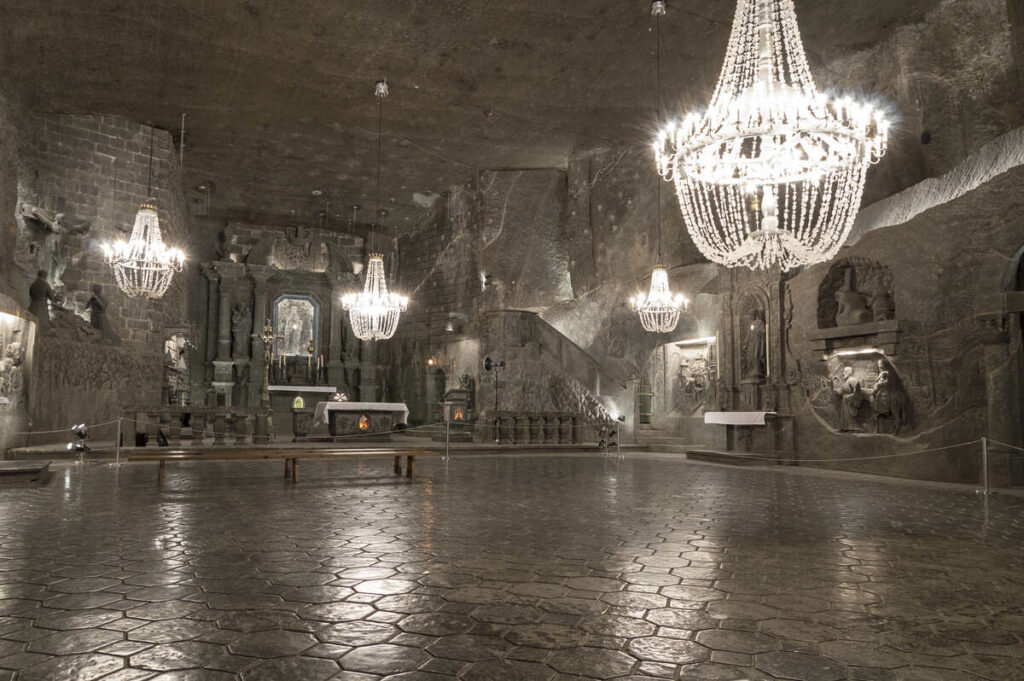
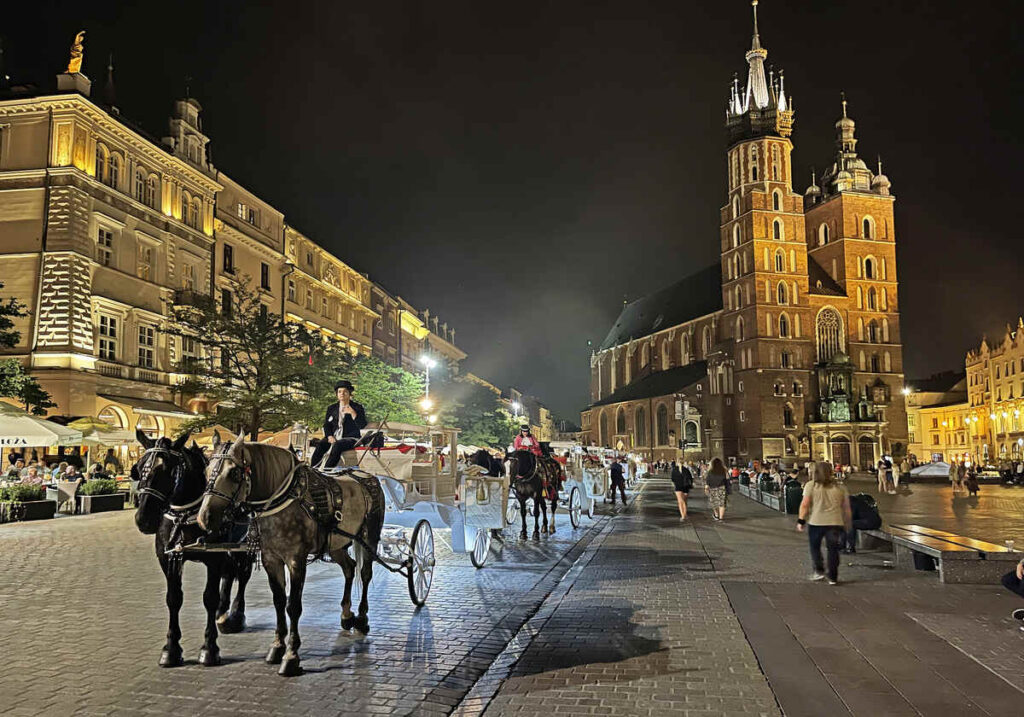
Day 7: Discover More of Kraków
After a heavy day yesterday, keep things relaxed with food, a museum, and a walk around Kraków. Start with breakfast at Café Camelot, a cozy spot just off the Main Square with soft chairs and decent coffee.
When you’re ready, head up to Wawel Castle. Visit around and pass by the cathedral, the royal chambers, and the courtyard. The dragon statue at the bottom breathes fire on a timer, which is fun if you’re traveling with kids or just like random things that breathe fire.
Lunch? Grab a baguette and coffee at Charlotte. It’s quick and good…Sure, not typical Polish, but it’s really good nonetheless. Then, catch tram 14 to Schindler’s Factory.
It’s a museum showing what life was like in Nazi-occupied Krakow. It’s well-done, with a lot of history, personal stories, and old photos.
Head back to Kazimierz for the afternoon and just wander. Grab coffee at Hevre, a former synagogue turned café-bar, and check out a few small vintage shops nearby. Later, climb up to Krakus Mound, a grassy hill with views over the city. It’s a nice place to rest and watch the sun go down.
Last but not least, to end this trip in Kraków, dinner at Starka is a must. They serve solid Polish food and house-infused vodkas. It’s popular, so book ahead if you can.
End the day back in the Main Square. Street musicians usually set up in the evenings, and there’s something nice about just standing around listening. Sadly, there isn’t nearly as much happening in the winter, so this is mostly a summer thing.
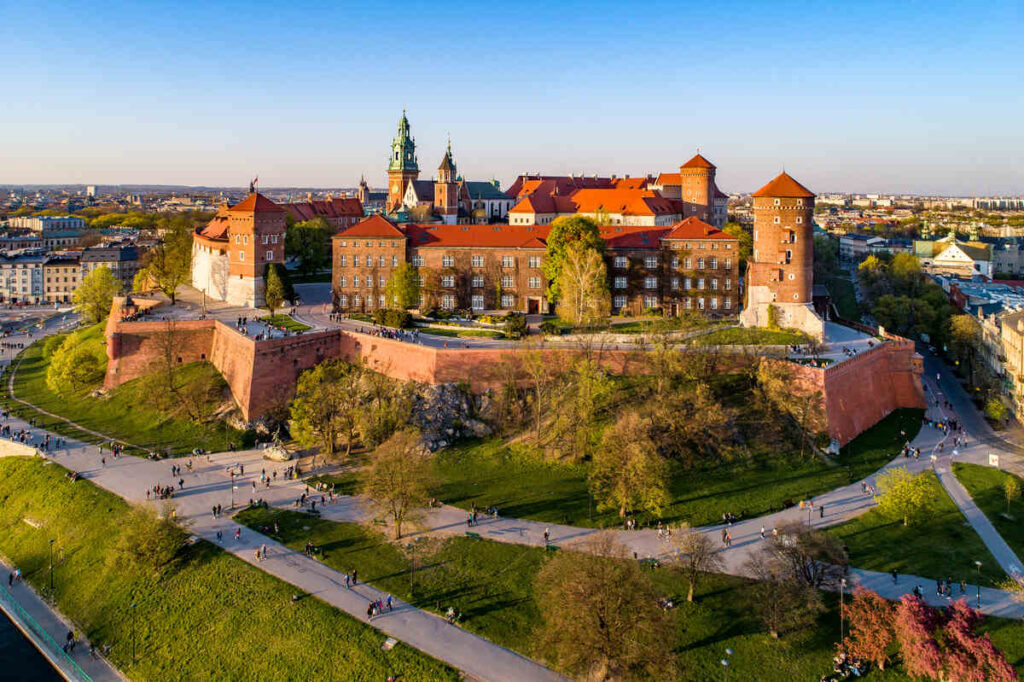
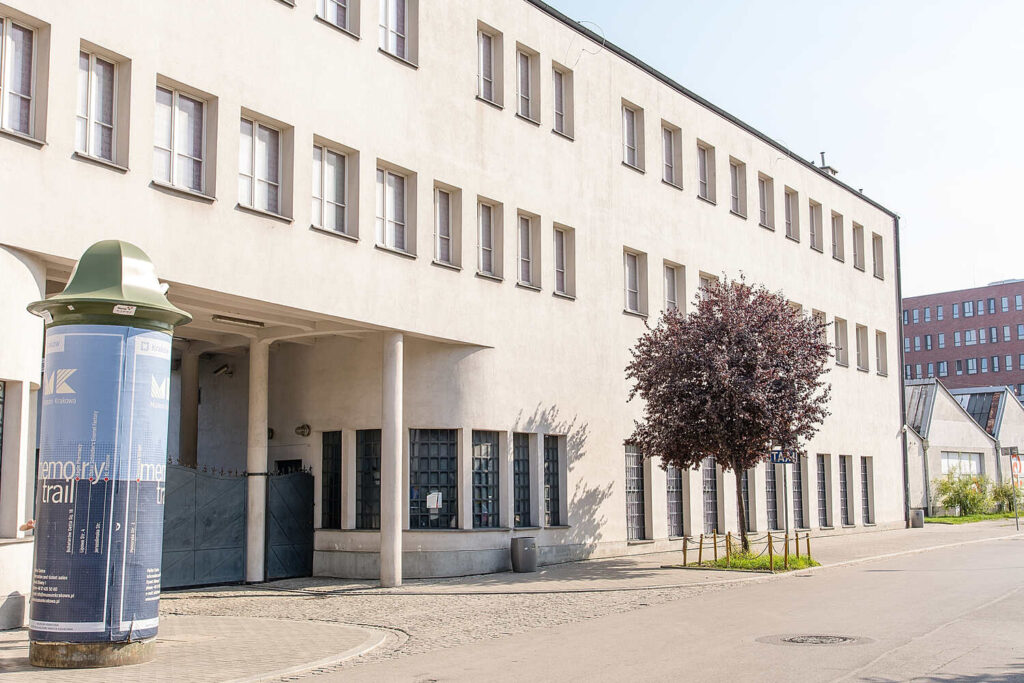
Day 8: Travel to Zakopane
Leave Krakow early and hop on a bus, train, or shuttle heading south. The ride to Zakopane takes around 2.5 hours, depending on traffic. Try to sit on the right side for better views.
Once you arrive, check into a wooden guesthouse or small hotel near Krupówki Street, that’s the main pedestrian strip, packed with restaurants, market stalls, and mountain gear shops.
Drop your bags, then take the Gubałówka funicular up the ridge. At the top, you’ll find walking trails and wide views across the Tatra Mountains. Grab a snack from one of the food huts. Go for oscypek, a smoked sheep’s cheese, grilled and served warm with cranberry sauce. Locals (and everyone else, for that matter) love it.
Back in town, have lunch at a small spot along Krupówki. Nothing fancy, just something filling. Spend the afternoon walking the strip, popping into stalls selling wool socks, carved walking sticks, and all sorts of wooden knick-knacks.
You can also stop by the Tatra Museum to learn a bit about local history, highlander culture, and mountain wildlife.
For dinner, head to Karczma Po Zbóju. It’s big, loud, and rustic, but the food is unbelievably good. At night, take a walk to the old wooden cemetery near the church. If the sky is clear, you’ll get stars. If it’s cloudy, grab a hot chocolate at Europejska Café and call it a night – Tomorrow is all about the Tatras Mountains!



Day 9: Tatras or Thermal Baths
Day 9, and you’ll start feeling nostalgic as we approach the end of this Polish itinerary. Today you have two good options. If you’re up for walking, get an early start and catch a minibus to the Morskie Oko trailhead (just tell the driver, they all know it). You’ll pay a small entry fee at the park gate, then walk a wide, paved road up to the lake in the Tatras Mountains.
It’s not steep, just long, about 2 hours each way. Once you’re there, you can circle the lake or grab a warm bowl of soup at the hut. Bring water and layers, even in summer. The weather can shift fast up here.
If hiking isn’t your thing, take it slow. Stay in town and book a trip to Chochołowska Baths, which is about 30 or 40 minutes away. The pools are warm and outdoors, and you get full mountain views while you soak.
There’s also a sauna zone and a restaurant, so you can spend a few lazy hours doing nothing at all.
Either way, head back to Zakopane in the afternoon. Before dinner, browse the market stalls again. Grab some smoked cheese to go, or look for little jars of local herbs and teas. And maybe get some souvenirs to take back home as well?
For your last night in the mountains, book a table at Bąkowo Zohylina Niźnio, a traditional Polish-style restaurant that does big meat stews and serves mulled wine in clay mugs. You’ll probably hear horses passing by on the road outside. It’s that kind of place.
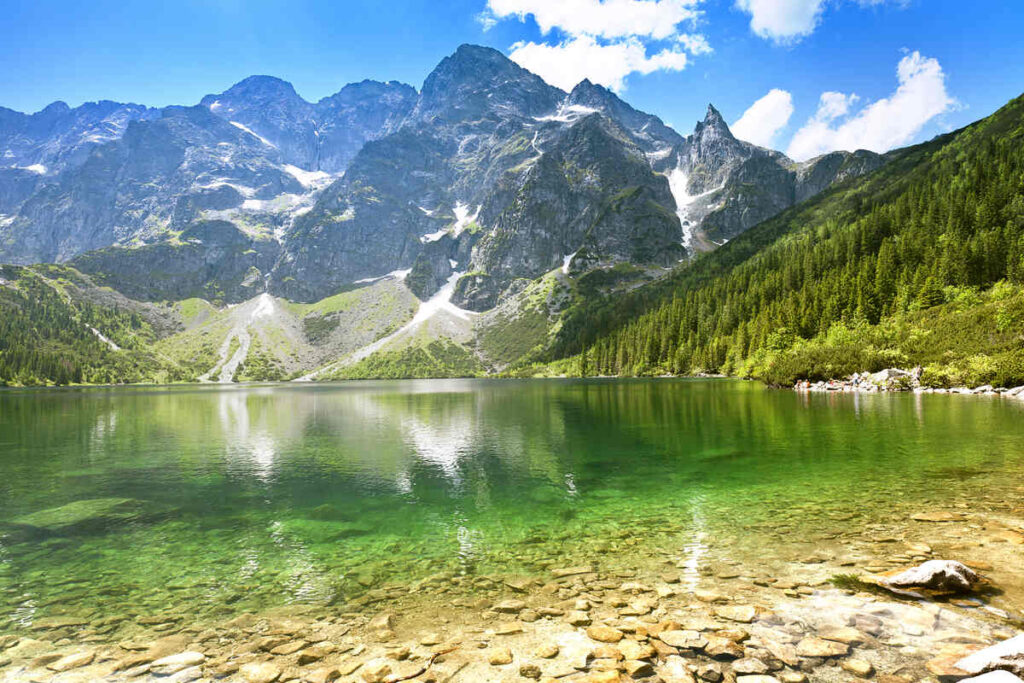
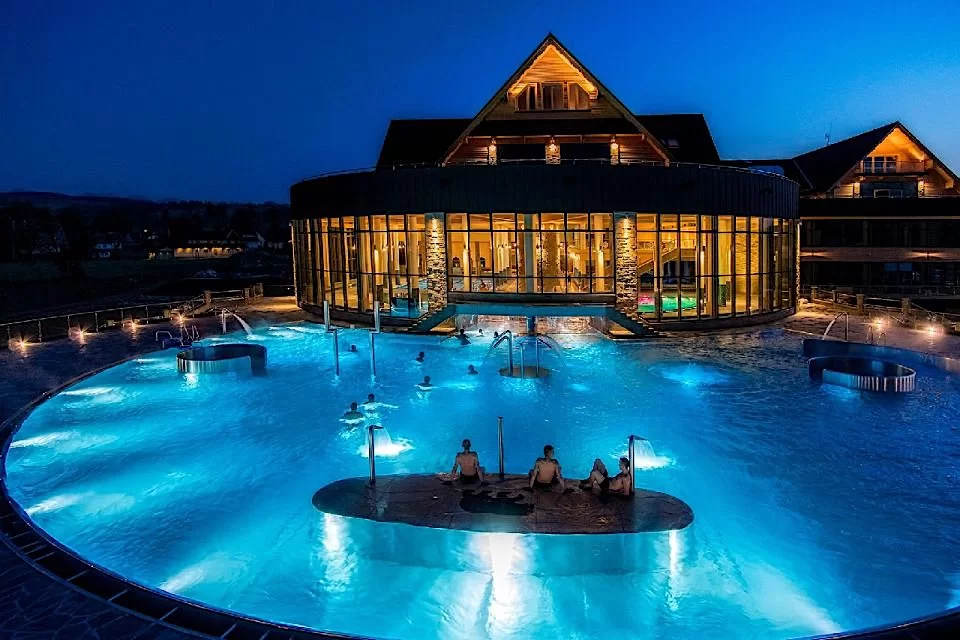
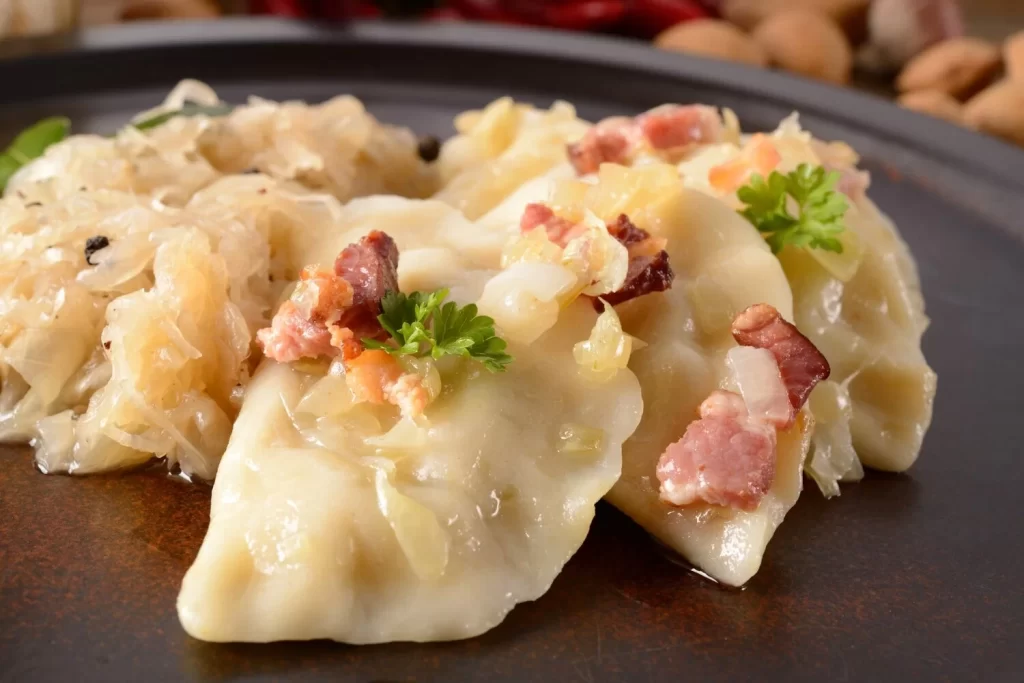
Day 10: Return and Fly Out
No rush this morning…unless you have an early flight, of course. Have a proper breakfast, maybe try racuchy, Polish-style apple pancakes, with tea or coffee. Then catch a mid-morning bus back to Kraków. You’ll pass hills, sheep, and forests as you head back toward the city.
If you’re flying out of Krakow, you’re already set. If your flight’s from Warsaw, no worries, just take the fast train from Krakow (about 2.5 hours), but plan your timing carefully.
If you’ve got time before your flight, store your bag at Kraków station and take a last lap around Planty Park. It wraps around the old city like a green belt. Pick up some amber jewelry, Polish pottery, or even just a magnet along Grodzka Street. Grab lunch at a bar mleczny (milk bar) and go for żurek soup if you haven’t tried it yet.
Then head to the airport, tired but full, and we guarantee, full of memories. You’ve seen a lot in 10 days. Maybe not everything, but definitely enough to start missing it before you’re even gone.

FAQs About this Itinerary for Poland
Even a short trip can leave you with questions. And that’s the case with most first-timers, so here are the ones that come up most often. Things people ask before booking trains, tours, or even packing.
Can You Do Auschwitz and the Salt Mines in One Day?
Yes, but only if you take a guided tour. Your guide will pick you up, take care of the tickets, and keep things running on time. First stop is Auschwitz, where the guide walks you through both sites (Auschwitz I and Birkenau).
After a short break, you head straight to Wieliczka Salt Mine. You’ll skip the queues and go in with a group, and by the time you’re back in town, it’s usually evening. Around 7 pm, most probably. Doing it on your own in one day? Possible, but it’s not ideal. We recommend not bothering unless you’re used to tight DIY travel.
Is Zakopane Worth the Trip?
Yes, it’s very much worth it. It’s a big change from the cities in Poland. The air is clean, the views are great, and the food is comforting and quite different from Warsaw and Krakow. Even if you don’t hike, you can ride up the ridge, walk around town, or relax in thermal pools.
Summer is green and cool, autumn is quiet and crisp, and winter turns the place into a full-on snow town. Just be ready for a bit of a touristy feel in the main areas. Still, for two days at the end of your trip, it’s a great way to wind down.
Do You Need to Rent a Car in Poland?
No, it’s not necessary. Trains and buses will get you everywhere on this route. Warsaw, Gdańsk, and Kraków are well-connected by trains. You can easily get to Zakopane by train or by bus.
In cities, use trams, buses, or Bolt/Uber, which are all cheap and easy. A car only makes sense if you’re planning to explore small villages or remote mountain trails off the main tourist path. For this trip, public transport does the job just fine.
How Much to Budget for a Trip to Poland?
You’ll be fine with around 80 euros (about $90 USD) a day for mid-range travel. That covers clean hotels, good food, and transportation. Hostels and budget hotels cost 30 to 40 euros per night. A full restaurant meal is often 8 to 12 euros, and museums are usually under 10 euros.
Big tours, like Auschwitz and the Salt Mines, will cost more, around 30 to 70 euros combined. Buses and trams are super cheap, often less than 1 euro per ride. In short, quite affordable. Poland’s still one of the best value spots in Europe, even in high season.
Conclusion
So that’s it. 10 days across Poland, from the capital to the coast, the royal cities to the mountains. You’ve seen a mix of big sights and local spots, moved at a steady pace, and left space to breathe.
The best part? You didn’t need to rush or fly all over. Just smart train rides, strong coffee, and solid planning. Keep your notes and photos. You’ll want them when you’re planning your next round. Poland’s got more in store if you come back. And honestly, you probably will!
